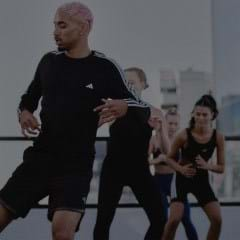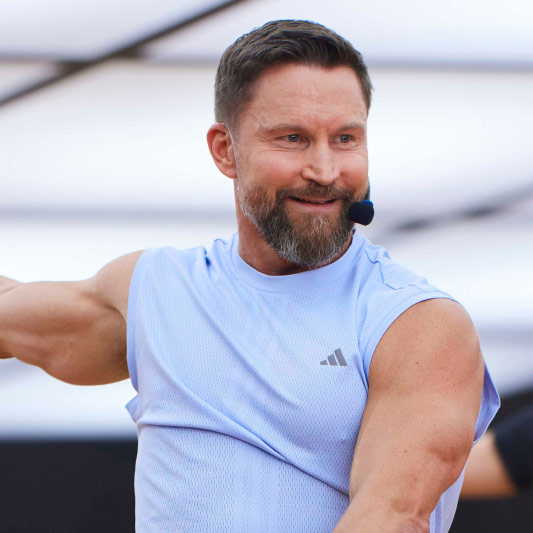
COREY BAIRD
I love being a Personal Trainer because I like to see people move better. If I can help someone move better, it's going to improve their quality of life. That’s what I’m really passionate about: helping people feel great, preventing them from getting injured and helping them to become more flexible.
What does my day look like? I get up at 4:15am, eat breakfast, have a cup of tea and take some time for me. I’ll have about 30 minutes to chill before I need to leave home at 5:30am, so I might do some study or watch Netflix or whatever. I have clients from 6am until 12pm, normally back-to-back, and after that I’ll come home, eat lunch and spend some time with my wife, and train around 2pm. I’ll do some work for my online clients, then go and pick up my son from kindergarten. I’ll keep working on my online stuff for the rest of the day, in between having dinner with the kids and putting them to bed.
I train clients both at the gym and online. Since COVID, I think it’s important to offer both. With my online clients, I have a video library of movements that I send with their programming. Mostly my online work is emailing them, giving them feedback on their technique and so on.
My advice for having longevity as a PT is to do lots of online courses. Just do them all! Pre-COVID, I’d have to fly to the US or Australia to take courses with all these amazing people, and pay for flights and accommodation, etc... Now, everything is available online, so you can learn from your bedroom. If you want to stay relevant in the fitness industry, you’ve got to keep upskilling because the market is constantly changing. Right now, for example, mobility is huge. In particular, loaded mobility is great because it can take you straight into a deep range and develop strength at the same time.
Are there any downsides? Well, getting up early isn’t the best, but for me it works because I get to beat the traffic! Probably the only downside is that I’m a sub-contractor, which means if I don’t work, I don’t get paid. If I’m sick, or my clients are sick, then there might be several hours where I’m not earning and that’s obviously not awesome because I still have to pay rent at the gym. But on the whole, it’s pretty great. I set my own schedule. I get to work with amazing clients. I think I’m pretty lucky.

KAYLAH-BLAYR FITZSIMONS-NU’U
Being a group fitness Instructor and Personal Trainer go hand in hand because they’re both about having a positive impact on people’s lives. One of the advantages you’ll have as a group fitness Instructor is that you already know how to coach people through the movements. You’ll already be familiar with the fundamentals of getting people to move well.
What’s the key to success? Les Mills Auckland City has between 8K – 12K members at any time, and I noticed that those who didn’t already have a community or following in the gym were the ones who’d struggle to get clients. If people didn’t already know who they were, they wouldn’t last. Being seen in the gym makes a big difference, because the members can see your behavior. For example, Des Helu is not only great at what he does and comes from a very credible background of sports conditioning; he’s also a super friendly guy who makes everyone feel seen.
It’s important to create a safe space for your clients to be honest with you about how they’re enjoying the training. I always ask for feedback and if they’d like to do more or less of something. You need to be able to read them and be prepared to pivot. You might have a whole hour of stuff planned out but if they’re not feeling up to it, it might be a stretching kind of day instead. There are many times I’ve canned a session and bought my client a coffee or taken them for a walk because that’s what they actually needed.
To get new clients, being active on social media can be really helpful. Definitely use your position as a group fitness Instructor to pitch your business and I’d also make friends with the membership consultants and receptionists because they’ll be the ones suggesting you as a Trainer to new people.
There can be a risk of burnout for sure. Just before COVID, I was pumping out 32 sessions a week and that was probably too much. Be smart with your hours so you’re not always in early mornings and late nights, and make sure you lock in regular time off. Burnout can make you look as though you’re uninterested in clients, so be careful to take a break before that happens.
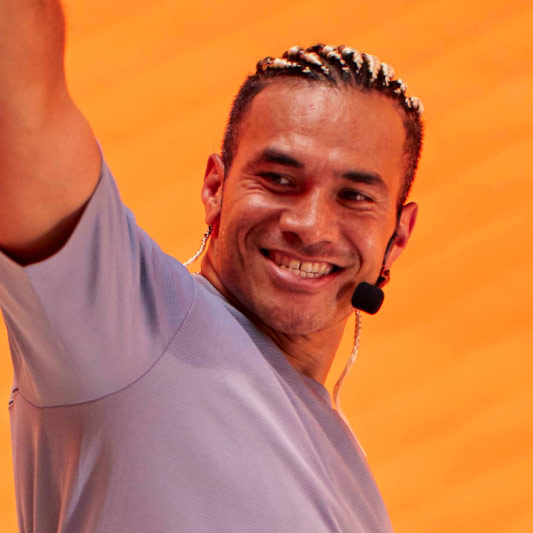
DES HELU
Being a Personal Trainer benefits you so much when it comes to teaching group fitness. Your ability to coach technique will be at another level! I’m so much more confident in what I’m saying and the reasons behind why we do certain movements because I'm also a PT.
When I first became a Personal Trainer, I thought it would be just be about getting people to look fit and amazing, but it’s so much more than that. You develop amazing relationships with clients, sometimes it can feel more like you’re their therapist! You get to know so many different people, learn about their lives and who they really are.
One of the big benefits is that you’ll have patches of time throughout the year where you’ll have more time for yourself. Setting your own schedule means a lot more flexibility than a 9-5. You can take a longer lunch break if you want, go home to spend time with your partner and kids, know you can fit in your own workout at some point in the day.
Are there any downsides? Sometimes you’ll have clients wanting to train at the same time you teach. My advice would be to play the long game and take the class. You don’t know how long the client will be with you whereas a class is permanent, so generally more financially secure.
My advice for Instructors looking to transition to PT’ing is to know what their strengths are. Confidence also plays a big role. Use your position as a group fitness Instructor to become friends with the members and become a well-known face in the club. You’ll be surprised by the number of people that will get back to you when you start telling your classes you’re now also a PT. It’s so much easier to get clients when you’re also teaching group fitness.

ANTHONY OXFORD
The biggest benefit of being a group fitness Instructor and Personal Trainer is that teaching expands your scope of potential clients. When most people start off as a PT, they have to walk the gym floor to search for clients and offer free taster sessions. I rarely had to do that. Not only did some of my participants turn into clients, but I got a huge number of referrals via the people in my classes – telling their friends who didn’t do group fitness about me. Of course, it’s great when people come to your classes as well as train with you because you’re then seeing them for a week’s worth of sessions and they’re really getting great value for money.
What I love the most is the friendships I’ve formed with my clients. You really do get to know a person when you train them – you know their strengths and weaknesses, see them on their good and bad days. It’s an amazing journey when you start with a client, especially one who’s not had much exercise experience. To see them transition from doing a pushup on their knees to doing one on their toes or being able to do a squat jump is an amazing feeling.
The key for Instructors wanting to become a PT is to focus on one or two types of training, or types of client they’re trying to attract. For example, rehabilitation or endurance training or HIIT. Picking a couple of things to specialize in makes the running of your business so much easier. Also, check out the gyms in your area to see whether they want you to pay rent or work a certain number of hours on the gym floor. Paying rent can often be more financially viable – but it depends on your situation.
I’d highly recommend working on your communication and sales skills. You need to be able to communicate well to explain and listen to understand. Your client base will have different personalities, limitations and barriers and a great coach can connect with them, responding and reacting to individual needs. Always be confident about your skillset and when setting your price structure, beware of underselling yourself.
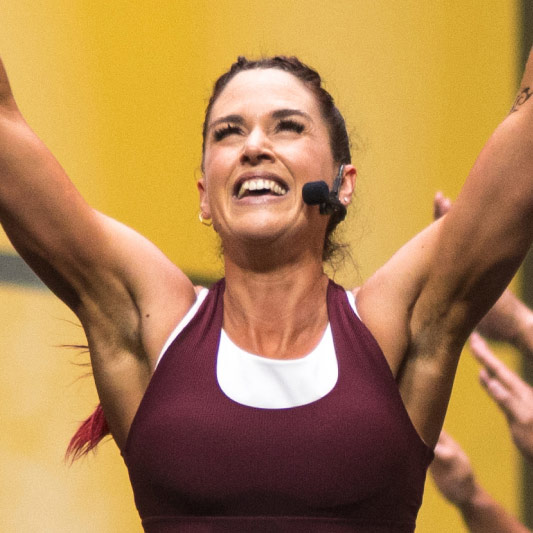
MANDI HIRINI
I’m the Personal Training Manager at Les Mills Hutt City in New Zealand. When recruiting new people, I look for those who have resilience because when you first start out, it can be tough. However, building a thick skin and an unstoppable attitude will get you places! Know that what you put in, you will get out.
I definitely look for self-motivation because at the end of the day you’re running your own business, so you need to put in the work. I want people with an open and growth mindset because the fitness industry is constantly evolving – you need to be open to exploring the latest trends and offerings in the market. I also want PTs who have charisma and are both caring and empathetic.
When you’re first starting out – it’s high volume: offering free sessions, walking the gym floor, introducing yourself to members, working out to be seen and doing a lot of all of this to only get no’s, or ghosted… it’s hard work. It can be uncomfortable putting yourself in these positions, and doubts and uncertainty can creep in – but trust the process. The no’s start to become yes’s, people approach you while you’re working out because they like what you do, and you get referrals coming through your website. Let the success of your clients be your greatest marketing tool for referrals – get them to talk because word of mouth is the best!
It can be easy to overcommit yourself when you’re a PT and Instructor. Fair to say, I’m still learning! I’m a yes chick that would love to fill my day helping people 24/7. However, to be the best for others, looking after myself first needs to be a priority. It’s the old ‘practice what you preach’ approach. A schedule is a great place to start – what does your perfect week like? From Monday 5am to bedtime – use a spreadsheet template (loves a spreadsheet!) and schedule your sleep cycle so you can be consistent. Schedule your clients, your classes, your admin, your own training, your personal development, when you shower and eat your lunch (not together, or maybe you do – you do you!) – know your limits and prioritize the activities that keep you ready to take on each day. This can be trial-and-error, but once you get the formula right – you’ll be winning at life!
My advice for Instructors thinking about making the move? JUST DO IT! The biggest thing that tends to hold many people back is “imposter syndrome” and concerns about financial security. The truth is that as a group fitness Instructor, you already have so many skills that are transferrable to a PT business (coaching, motivation, social skills, invoicing/tax), and the rest you can learn like anything else! Know that what you have already will support you. Seek an education provider that offers the best course for you to gain your qualifications and then take the step: discomfort creates growth, failure paves a new pathway to try again – trust that your classes will supplement your business and you’ll have a career of changing people’s lives, for real.
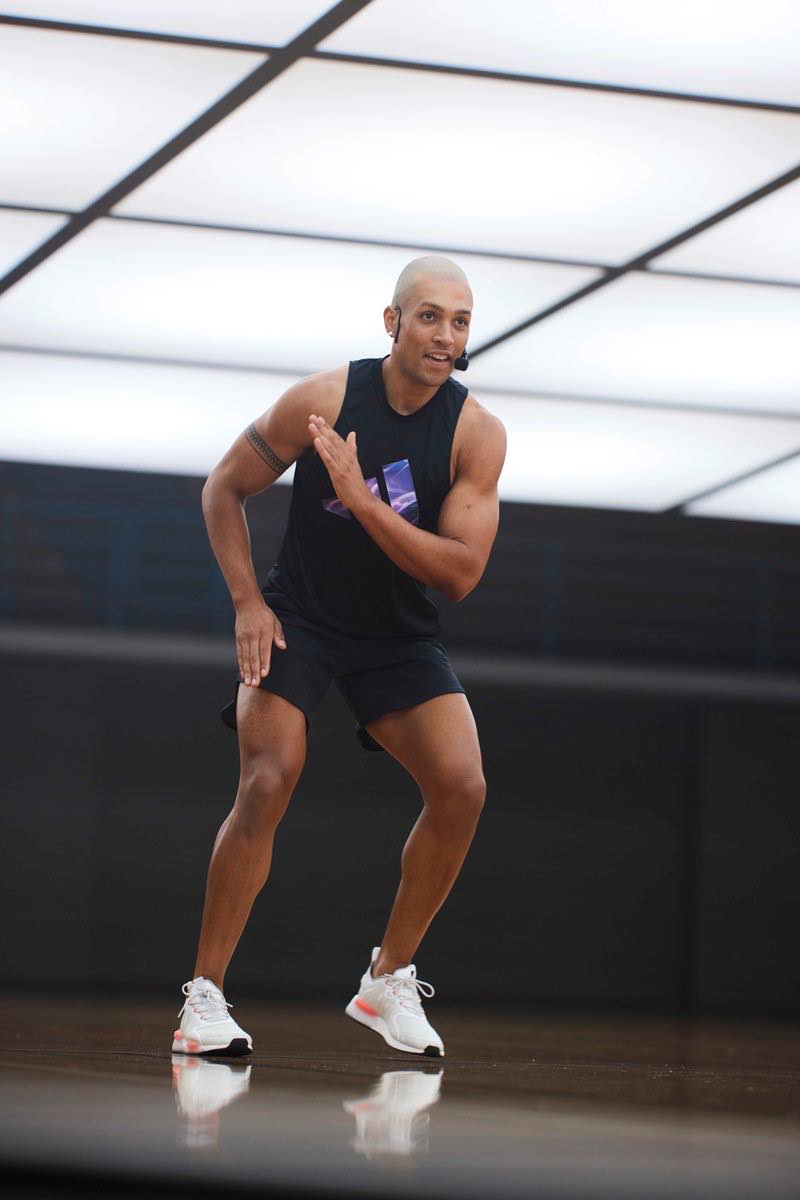
OTTO PRODAN
When I started teaching group fitness, people would ask me all sorts of questions related to technique or injuries – and I didn’t have all the answers. I realized I needed a qualification in fitness to be able to answer the trickier questions with more confidence, and it was the best decision I ever made because I acquired skills that improved the way I taught. I started teaching my group fitness classes more like a Personal Trainer – and people noticed. They started approaching me for Personal Training sessions, and I decided this was the perfect opportunity to start my business.
The roles complement each other so well. Being a PT has taught me how to correct technique and adjust the intensity of certain exercises by slowing down the movement and spending more time with people (which can be hard to do in the group fitness setting). These are good skills to have when teaching group fitness – I’ve always wanted my classes to get the same experience as a one-on-one PT session, and your class will really appreciate it. On the other side of the coin, group fitness has taught me how to interact with people from so many different backgrounds which has been really beneficial for my PT business.
One of the challenges is that many clients will want to exercise during peak time, which is often when you’re teaching. At the start, I found it quite hard to schedule clients right before or straight after my classes. I’ve learned I need to include a 15-minute window so I have time to get changed, get in the zone or have a quick shower so I don’t feel like I’m always rushing. Sometimes you have to decide: what’s more important, your class or your PT session? It can be difficult.
To avoid burning out, I’ve learned it’s okay to say “no”. I worked from 6am – 9pm for a good few years and it really took a toll on my personal life. In the end, I had to decide whether to take clients either early morning or late at night and most of my clients rescheduled their appointments to continue training with me. Learning to say no was a good skill to develop.





